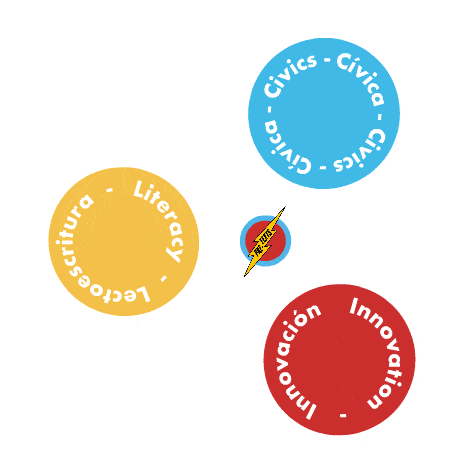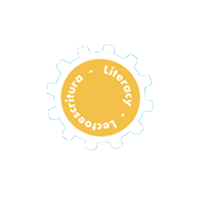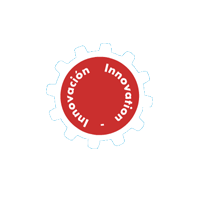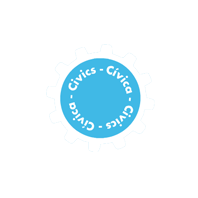“Hello, Cultural Agents Community! I’m excited to share some recent session updates with you all. We’re Nandavanam, a Toronto-based community organization where we embrace asset-based community-led development (ABCD philosophy) to enrich our community “garden” (that’s what our name means in Tamil!). We hosted a unique wellness workshop for five families, focusing on the Pre-texts protocol. Unlike typical sessions that separate age groups, we brought families together in one vibrant group, exploring the intergenerational dynamics of learning. This experiment unfolded in our garden of growth, leveraging collective wisdom to enhance mental health and well-being through practical tools and creative engagement. We focused on families of the Telugu diaspora but we look forward to expanding this programming to the larger South Asian and immigrant communities in Canada.
Our session centered on the beloved Telugu tale of “Tenali Rama,” which participants transformed into skits, illuminating the narrative’s richness and eliciting a joyful response from everyone involved. The shared experience not only dissolved stress—some attendees reported feeling rejuvenated and headache-free—but also cemented the belief in the power of community learning. The feedback was overwhelmingly positive, with parents eager to delve deeper into the Pre-texts method in our upcoming sessions. To give you a glimpse of the types of feedback, we heard parents say: “I felt like a kid for the first in a very long time”, “we didn’t just spend time here, rather we invested it in to the community”, and my favourite, “even though we met everyone today, after this session, it feels like we’ve known each other for a decade.” This week, as we reconvene, we anticipate another round of insightful engagement and shared laughter, reinforcing our commitment to nurturing well-being through creativity and connectivity.
Full Report
In our training, we discovered the joy of learning. Imagine a room full of educators and students, all blossoming as they engage with the material. We started with some simple yet profound ground rules. One of the most powerful was ensuring that no one spoke twice without everyone speaking once. This rule created a compelling sense of community. Every voice mattered, and the group collectively ensured that no one was left behind. This sense of belonging and mutual respect was palpable, and it extended beyond just speaking – it was about truly hearing each other.
Another ground rule was that there were no right or wrong answers. This idea has fascinated me since reading about building thinking classrooms. In traditional settings, students often perform the role of a student, trying to impress or get things right. But in Pre-Texts, we were invited to explore ideas freely. When asked to formulate a question about the text, I found myself genuinely curious. I wasn’t trying to impress; I was truly engaged in the process.
The creative aspect of Pre-Texts was equally transformative. We ended each session by making art out of the text. The facilitator provided a framework, but the group shaped the activity to fit our desires. Whether it was a charade, a reenactment, or a musical jingle, each creation brought us back to the text in a new and original way. This process of creation reinforced our learning and highlighted the idea that learning is, indeed, creating.
Reflecting on the role of the facilitator, I realized how different it is from the traditional teacher’s role. Teachers are often seen as “full cups” pouring knowledge into “empty cups.” But in Pre-Texts, the facilitator is more like a guide, ensuring the protocol is followed and participating alongside us. This approach allowed facilitators to contribute their perspectives and learn with the group, rather than leading us to predetermined answers.
Finally, we viewed the text not as a monument but as an ingredient. Imagine the text as a diving board at a community pool, with each participant taking turns to create their best cannonball. This metaphor captures how we used the text as a starting point for playful exploration and deep engagement. The text was a tool for learning, not an authoritative source to be memorized.
In just ten hours, it felt like we experienced a whole semester of collaboration. The Pre-Texts protocol fostered identity, mastery, and creativity, the core tenets of deeper learning. It showed us that when we come together, follow these ground rules, and use a text to play, we find joy in the learning process. This approach transforms education, making it meaningful, engaging, and deeply rewarding.
From the written and verbal testimonies of our workshop participants, we have distilled out the following three themes that speak to the effectiveness of Pre-Text: simplicity, depth, and diversity.
“When Kishore tried to explain the pretext method to me months ago, I was pretty lost but having done the facilitation training myself, I totally feel the same way. I don’t say this in a way that it’s complicated, but it’s actually so simple but those conditioned by a traditional school system won’t be able to fathom such freedom and creativity with any text.”
Simplicity is not often associated with modern educational pedagogy. The essence of pre-text can be distilled into three words—joy inspires learning. The protocol described above are emergent practices designed to facilitate joy to inspire literary engagement. Many of the workshop participants were surprised how simple the protocol was and yet how diverse our workshop journey became. Pre-Text allows for joy to guide emergent interactions of knowledge and art based on a text. Joy is the catharsis of performing an embarrassing skit together and laughing at the end. Joy is recognizing oneself in another’s reflection. Joy is being seen and selected for one’s work, even anonymously. Joy is creating something together. Joy is play without the fear of condemnation—of “right” or “wrong”. The text, therefore, becomes an excuse to play, which defangs any traditional limitation of being a “difficult” or “boring” reading. Establishing a strong but simple protocol allows a freedom for knowledge to evolve in its natural and most exciting state: as an emergent and creative unfolding.
“I explored a text in a way I haven’t before – first listening to it, then reading it, then questioning it, then creating from it, and finally going on a tangent with it. This made me feel like I built a relationship with the text, and with the people in the room through it.”
In our pre-text workshop, participants reflected how depth of learning was achieved through—well—reflections. After each activity, we hold a “What Did We Do” session where each participant gets to observe their own depth achieved through a joyful concentration upon a text. While the prescribed instruction for this session is to reflect on the process of the activity, it inevitably evolved into a session where participants reflected on their feelings and realizations. Rather than being a session where participants are asked to perform comprehension, it became a space where participants were allowed to experience their own surprise at the process and how it affected them. One of the foundational reasons why reading is a universal need for a healthy community is that reading facilitates self-discovery—realizing one’s own fabric through the textures of others and seeing your own on other’s robes. Pre-Text ensures space for this depth of realization to happen during our “What Did We Do”. It gives space to recognize growth, to give measure to depth achieved through engaging with a text through art.
“Taking this course in a multicultural, intercontinental setting has further awakened my curiosity and admiration for reading journeys quite different from mine. As the course came to an end, I found myself wishing to do the workshop daily.”
“Extremely grateful to have been part of a program that connected me with such awesome people around the world! I am so hopeful for the future of education because this is truly the start of it. I’m hopeful for an inclusive classroom where kids can learn at their own pace, with their own tools, and without boundaries! <3”
Diversity was an emergent fact of our group, discovered organically rather than emphasized. Our diverse cultural backgrounds spanned India, Hong Kong, Canada, and the US, but we also embraced diversity in language, age, and experiences. From the first session, it was evident that diversity was not a barrier; instead, it added depth to our reflections and enhanced our group’s critical thinking.
The Pre-Texts protocol relies on group interactions to facilitate individual learning. One person’s unique question on a text inevitably leads another to delve deeper in search of an answer. Learners piggyback on each other’s ideas and questions, creating trajectories of thought driven by diverse perspectives. This training session, along with others we have conducted, demonstrated that diversity is not a challenge to be managed but an asset that enriches the learning experience.
At the heart of this process is the joy derived from engaging with the group, the joy of social connection, and the joy of learning through creative exploration. While diversity broadens the learning trajectories, the core of the process is the inherent joy in learning as a group. Neurologist Judy Willis points out that when joy and comfort are absent from the classroom, students become disengaged and anxious, losing the pleasure of learning. Conversely, engaged students under minimal stress experience free flow of information through the amygdala, leading to higher cognition, making connections, and experiencing ‘aha’ moments. Willis emphasizes that such learning stems from classrooms with an atmosphere of exuberant discovery, not from quiet classrooms and directed lectures.
To conclude, we invoke our starting and most important point, that joy inspires learning. An equally important and astounding mention to make was how little preparation and resources were needed to produce these results among a diverse range of participants. This workshop was proposed four days before the first session. Local organizers Clement Chung, David Chen, Kishore Daggupati, and Doris Sommer recruited ~17 people within the matter of days. No preparation was needed from the participants. The workshop was held on zoom and no materials were purchased. The official cost of holding this workshop was zero dollars. Along with the implied commitment of an open-mind, time was the only commitment—two hours each day for five days, ten hours total. As reflected by one of our participants, these ten hours felt like a semester’s worth of collaboration, and many participants reflected how they felt like they were a part of a family by the end.
“On the last day, I felt as if I was part of a family of learners, where each person was a teacher of perspective and learner of curiosity.”
This has profound implications over the scalability and sustainability of Pre-Text as pedagogical acupuncture for a wide-range of educational challenges. Joy is not just an idealistic virtue, it is a practical measure to redeem the richness of learning to its foundation.
“The joy and pleasure felt by students are immediate.”
“I thoroughly enjoyed reading, learning, and comparing the results.”




